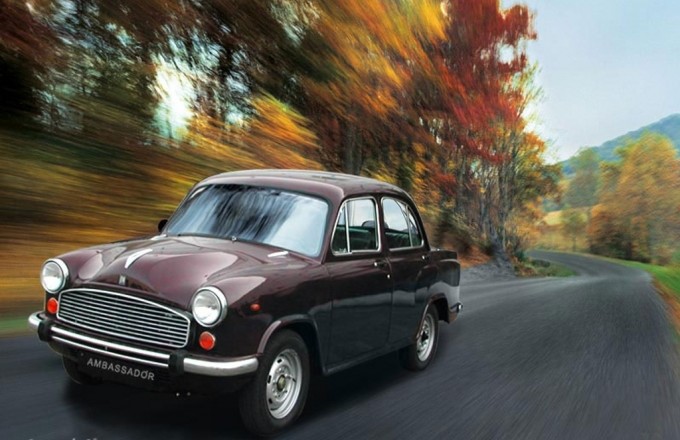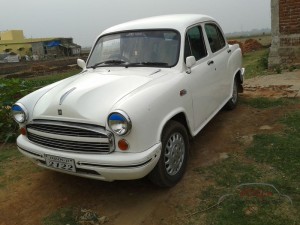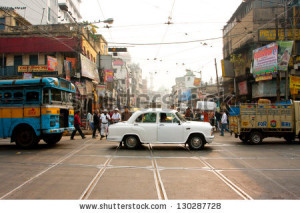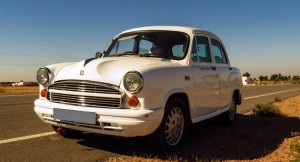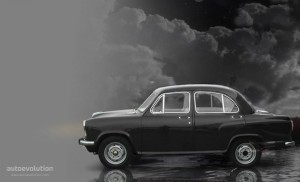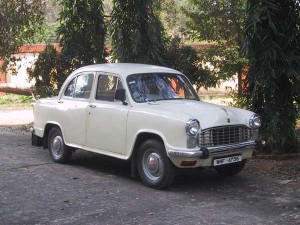As I stole lessons in driving, like any other teenager in India who had a car parked in his garage, I did it in a Fiat Premier Padmini. A more refined, smoother and more importantly manageable ride than the ubiquitous Ambassador in those days.
My big bro, my mother’s sister’s son who was the Alberto Ascari in the family, would pull my leg, “he is an expert in his car, but cannot drive any other.” I agree, a Fiat could do that to you; so could a Maruti Suzuki 800. But an Amby prepares you for ANY car in the world. My bro would tell me with scarcely hidden derision for the relatively new Maruti 800 flaunting driving school boards, “If you learnt in an Ambassador you could drive anything!” So finally, I went to University, behind the wheel of my grandfather’s 1979 Ambassador.
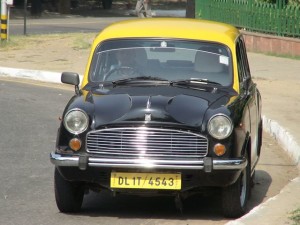 Before my car aficionado bro got it changed to a ‘modern’ console gearbox, the Amby had gears on the side of the steering. The gear grinds were all the more intimidating, and the shifts were directly proportional to the input you gave. Throttle jumps and driveline shunts were ample, and were direct comments on the level of driving skills you had achieved. But what none of this did was to shake up the eight passengers in the cabin. Funeral processions, Marriage parties, family picnics… the Amby was there to make sure they were merrier, simply because there were more.
Before my car aficionado bro got it changed to a ‘modern’ console gearbox, the Amby had gears on the side of the steering. The gear grinds were all the more intimidating, and the shifts were directly proportional to the input you gave. Throttle jumps and driveline shunts were ample, and were direct comments on the level of driving skills you had achieved. But what none of this did was to shake up the eight passengers in the cabin. Funeral processions, Marriage parties, family picnics… the Amby was there to make sure they were merrier, simply because there were more.
Ever since production began in 1959, there was always an Amby around, as family transporters or village taxis. Neighbours were considered selfish if they wouldn’t volunteer their Ambassador for a marriage. If there were five or more Ambassadors in a village, video coaches that plied for weddings would consider a whole village written off. They had no business there anymore!
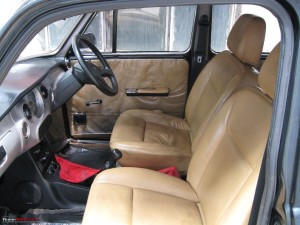 The Ambassador was the paradigm of rear seat travel – a limousine in its own right. It was the official government vehicle for ministers. Doting fathers sent an acre worth of their harvest to nostalgic daughters in its boot. Businessmen riding in the front seat next to the driver were considered epitomes of altruism. Politicians seemed to be so safe and comfortable in them, that bullet proof was hardly considered necessary.
The Ambassador was the paradigm of rear seat travel – a limousine in its own right. It was the official government vehicle for ministers. Doting fathers sent an acre worth of their harvest to nostalgic daughters in its boot. Businessmen riding in the front seat next to the driver were considered epitomes of altruism. Politicians seemed to be so safe and comfortable in them, that bullet proof was hardly considered necessary.
What made the Amby the favourite of so many? The ease and accessibility of repair, the surprising resale value, and most of all, the endless space in the rear. It seemed the only reason to retire the chariots, for not every Nawab owned a Rolls-Royce. It was at once the Rolls-Royce of the powerful, the farm wagon of the landlords, the Cadillac of local dons, taxis that could surprise mini buses, and the reliable companion to cheap pockets. Not because it would hardly be broken down – It fell out of service more often than the Italian-Indian style icon of a Premier Padmini – but because help was at hand anywhere you went. You could have the gatekeeper of the local inn to look into the matter if the Ambassador’s radiator had overheated or the gears had to be swung in place by an unforgiving arm!
It was the ultimate symbol of automotive monopoly and, later, the pathetic icon of shying away from change. But the Ambassador miraculously held on this far; those who needed classic condiments could stay, others could get out. Dwindling with its followers, the Ambassador is now being shown the way out of a world it created – where cars stood for old-school Indian values of comfort, ease of maintenance and the sheer arrogance of being able to own one.
It was inevitable, like the colonial rule itself that the car based on the British made Morris Oxford III had to be overthrown and sent out at some point. (And make way for a full-swing invasion of global brands!) Yet, It was so Indian like cashew nut or coconut, never ever giving the feeling that Morris had anything to do with it – So Indian that people could play the ‘Janaganamana’ at the start and finish of every journey!
Perspective change could have no better illustration than the feeling I had when I returned to India for the first time from Dubai. As the mind expanded to the tune of the Chevrolets, Mercedes-Benzes and the Bentleys in the Gulf, the same carriage that claimed panoramic space in my mind was suddenly narrowed to a Morris Minor… but the surprise continued in how many passengers and luggage it could still carry! It was still the times when high speed driving in Kerala meant 60 or 70 kms per hour. Anything more by a few kilometres was simply scary and we looked up cornering taxi drivers as if Schumacher himself were driving us around. Schumacher’s racing is a part of history and stuff for legends. And so is the Ambassador. But both, nonetheless remain legends of driving prowess – one an inspiration, the other a whole school of training!
“As of 25 May 2014, the Hindustan Motors has suspended the production of the Ambassador.” Read about the Ambassador on http://en.wikipedia.org/wiki/Hindustan_Ambassador
But if you thought it would vanish into museums, like the telegram, you couldn’t be farther away from the truth. The Ambassador still catches the semi-urban and rural India’s fancy, with a legacy of numbers built over a half a century or more. As long as there are people and parts that can service the Amby, it will not hit the iceberg. It is too warm an Indian icon – inseparable and indomitable like the red, circular bindi on the Indian woman’s forehead.
Picture Courtesy: Various websites, and google images. Used with gratitude. If any image may not be used, kindly inform us at driveme@drivemeonline.com

